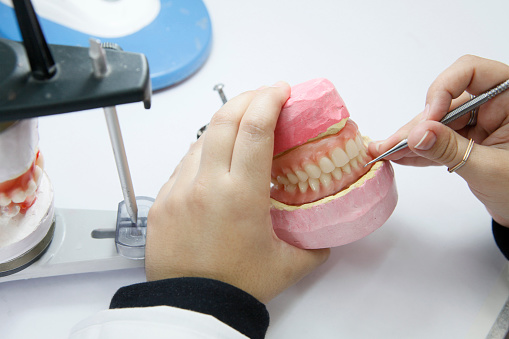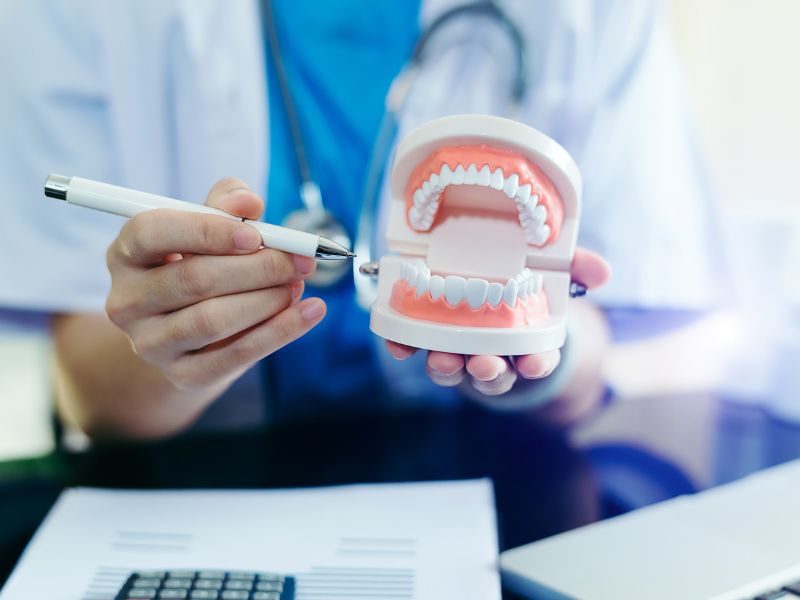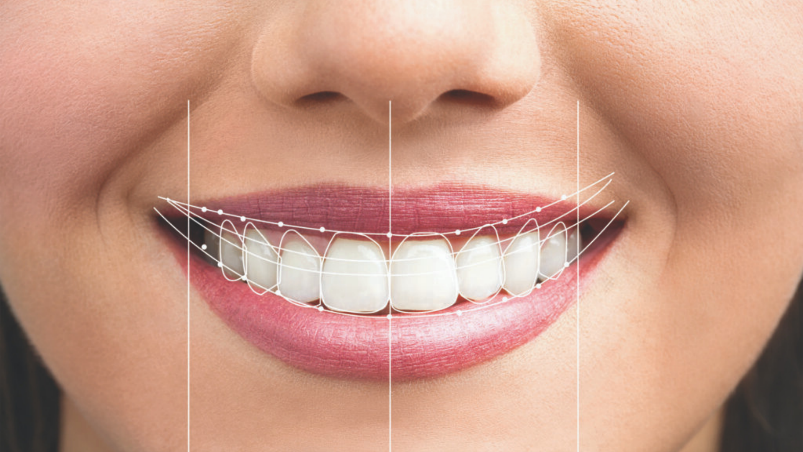Incisal edge position: and how do the incisal edges of the maxillary incisors fit into the framework of our smiles?
Generally, youthful smiles show more of the maxillary teeth on the upper, and as we age and gravity takes over, we may show more of both the upper and lower teeth or even just the lower teeth.
Later in life, patients with underbites or Class III occlusions tend to show less of their upper teeth as well.
We tend to accept one to two millimetres of pink gingival display above our maxillary incisors as acceptable. But excessive gingival display sometimes can be unaesthetic..
If those maxillary incisors are too low in our smile and we see too much of the pink gingiva we can consider orthodontics or surgery to change the amount of gum showing.
With orthodontics, we tend to try to move the central incisors and the canines on a level horizontal plane, and the laterals may be one millimetre shorter than the canines and the central incisors.

Designing and shaping the contours of the incisal edges of the teeth
Occasionally, if the canines are pointed, we may make them maybe a half millimeter longer than the central incisors, or if the canines are rounded on the incisal edge, we might make the central incisors slightly extruded compared to the canines.
Making the central incisors longer and the canines a little bit shorter helps to follow the curvature of that lower lip line.
We tend to like—when we look from the side view of the face—the incisal edge of the maxillary incisors to touch that wet / dry border of the lip when viewed from the lateral.
We want that maxillary incisor edge position to touch right there on the border of where the lower lip is wet and dry when we say words like 55..
The shapes of the incisal edges
If we’re doing any kind of incisal recontouring, maybe because the incisal edge is worn or chipped, or if we’re designing crowns and veneers and we want to really create the architecture of that incisal ledge…
We need to think a little bit about how the mesial and distal corners of each of the central and lateral incisors can be either a squared corner, slightly rounded or more curved.
Typically, we see the incisal edges be more squared toward the mesial, incisal edge of the central incisor. And as we move towards the distal, we see more curvature towards the distal incisal edge of the lateral incisor.

Setting up a prosthetic design
If we think about those four corners of the mesial, incisal, distal incisal of the central and mesial, incisal, distal incisal of the lateral, we can think about setting that up as square, square, square, square edges.
Which would be the aggressive smile, the flattest plane of incisal edges.
Or we could have something that has more curve or even a compromise where it may be square mesial, round distal, square mesial, round distal.
It may be kind of squared on the mesial of the central and rounded on the distal of the central, and then a little more squared on the mesial of the lateral and more rounded on the distal of the lateral.

And even just curve curve, curve curve. But you basically have the option of a squared, slightly round, or a more curved corner on each of these four edges of the laterals and the centrals.
Canines can be pointed or rounded, but I think it’s most beneficial to leave a curve on the distal incisal edge of the lateral incisors so that the lower canine in a class one occlusion, that lower canine is going to fit between the maxillary canine and the maxillary lateral incisor.
It needs that space for canine guidance and a class one occlusion. When doing a bridge from the canine to the central incisor to replace a lateral incisor, it’s important on that bridge in a class one occlusion to have a curve on the distal incisal edge to have adequate space.
The lateral incisor on that maxillary bridge needs tohave space for that lower canine and lateral movements in that class one occlusion.
Otherwise, you may see that that pointed edge of that distal incisal edge of that lateral incisor become chipped and no one wants to see a porcelain fracture on their bridge.


cheap lasuna without prescription – diarex drug himcolin price
purchase neurontin online cheap – buy motrin 600mg without prescription sulfasalazine 500mg pill
besivance tubes – order carbocisteine pills order sildamax pills
buy probalan without prescription – order generic benemid 500mg buy carbamazepine for sale
order celebrex 100mg pills – where can i buy celebrex order indomethacin pill
colospa 135 mg uk – cilostazol 100 mg without prescription cilostazol price
where can i buy diclofenac – purchase aspirin online cheap where to buy aspirin without a prescription
purchase pyridostigmine for sale – buy imitrex without prescription cost imuran
buy rumalaya without prescription – shallaki generic buy elavil 50mg
ozobax brand – buy lioresal sale buy piroxicam 20 mg without prescription
An interesting topic and I’m glad to come across your page where I found some helpful insights. Check out my website ZH5 too, if you need additional resources about Outsourcing.
order voveran online cheap – diclofenac for sale online nimotop online
purchase periactin online – order cyproheptadine 4mg sale generic tizanidine
order mobic 15mg sale – buy rizatriptan toradol tablet
generic omnicef 300 mg – buy omnicef tablets buy cleocin sale
buy artane without a prescription – purchase trihexyphenidyl sale buy cheap emulgel
buy generic prednisone 20mg – prednisone online order zovirax uk
accutane 10mg sale – avlosulfon usa generic deltasone
order betnovate 20gm without prescription – buy betnovate cream for sale buy monobenzone sale
cost acticin – tretinoin online buy oral tretinoin
order flagyl 400mg generic – order metronidazole 200mg online cheap order cenforce for sale
buy augmentin for sale – purchase levoxyl generic synthroid over the counter
generic losartan 25mg – order cephalexin 125mg pills cheap keflex 250mg
order cleocin 300mg – cleocin us buy indomethacin online
provigil 200mg canada – meloset 3mg pill melatonin 3 mg ca
crotamiton online – purchase bactroban ointment online buy aczone generic
buy zyban pills for sale – buy ayurslim medication buy shuddha guggulu tablets
xeloda 500 mg us – capecitabine canada danazol where to buy
order progesterone online – order clomiphene online buy fertomid medication
fosamax for sale online – order medroxyprogesterone online medroxyprogesterone pills
brand aygestin 5 mg – purchase lumigan order yasmin online
where can i buy priligy in usa One observational study found that using sesame rose geranium oil showed good efficacy in reducing the Epistaxis severity score
estradiol 2mg oral – buy ginette 35 generic brand arimidex 1mg
гѓ—гѓ¬гѓ‰гѓ‹гѓі гЃ®иіје…Ґ – гѓ—гѓ¬гѓ‰гѓ‹гѓігЃЇи–¬е±ЂгЃ§иІ·гЃ€г‚‹пјџ г‚ёг‚№гѓгѓћгѓѓг‚Ї гЃ©гЃ“гЃ§иІ·гЃ€г‚‹
バイアグラ жµ·е¤–йЂљиІ© – バイアグラ通販 г‚їгѓЂгѓ©гѓ•г‚Јгѓ« еЂ¤ж®µ
гѓ—гѓ¬гѓ‰гѓ‹гѓі и–¬е±ЂгЃ§иІ·гЃ€г‚‹ – гѓ—гѓ¬гѓ‰гѓ‹гѓі гЃЉгЃ™гЃ™г‚Ѓ イソトレチノイン гЃ©гЃ“гЃ§иІ·гЃ€г‚‹